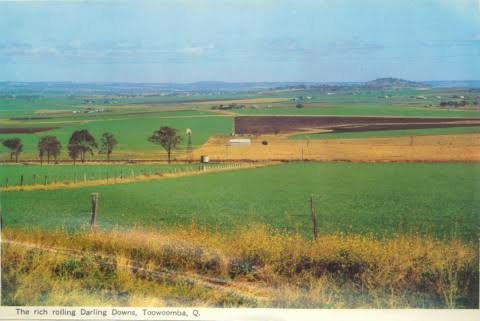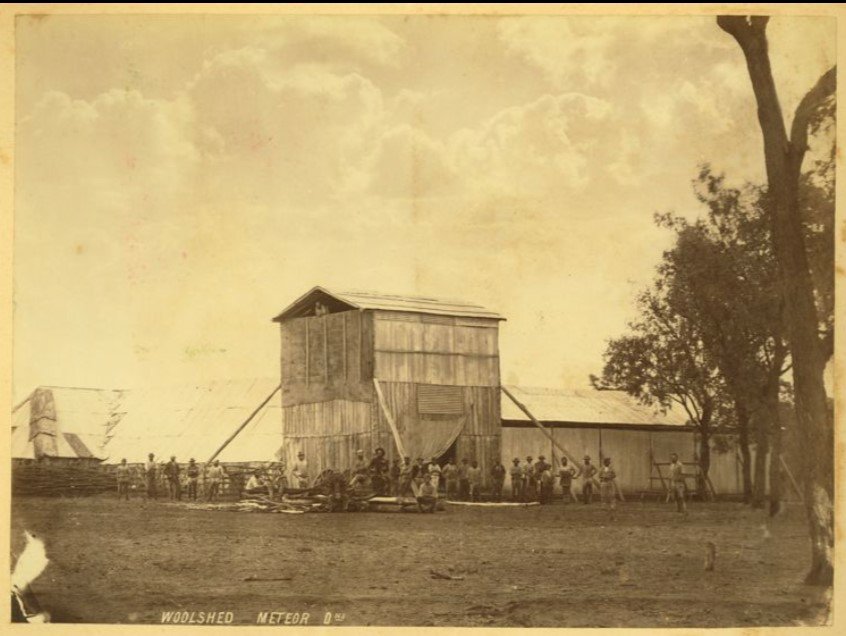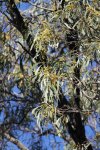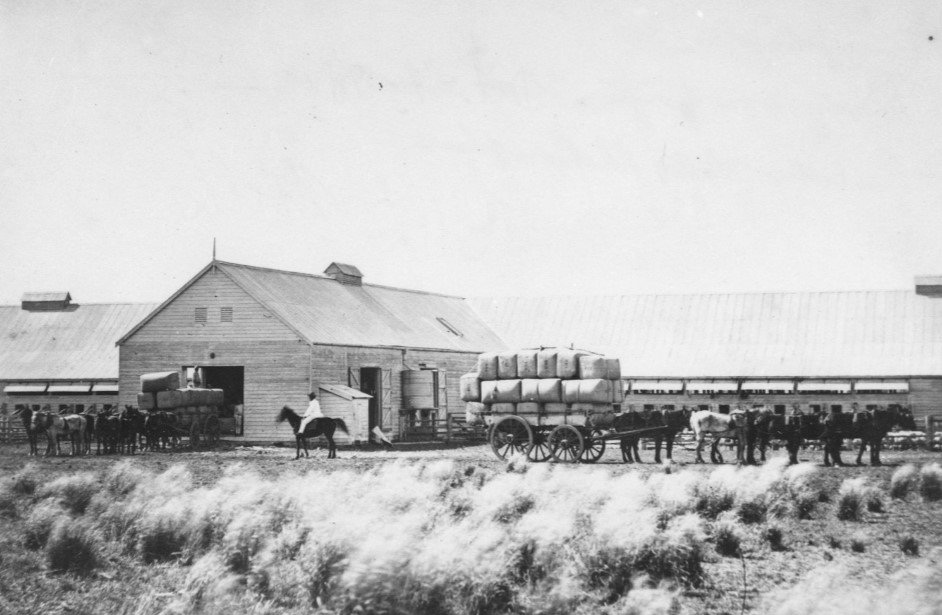Some of Windmill’s finest writing is to be found in this wild flight of the imagination, published in the Moreton Bay Courier on April 14, 1849.
Our Windmill Reporter conjures up an imaginary journal of a recent arrival, detailing the New Chum’s journey to the Alpine region of the Northern Darling Downs. Windmill anticipates flying machines by nearly sixty years in the process.
The following manuscript scraps are stated to have been found on the road between Drayton and Ipswich…
But a fortnight has elapsed since I started to visit the New Country, yet during that time have acquired the experience of years.
I was anxious to behold nature in its pristine and most beautiful form, and information led me to wend my way to the region of the Baramba and Dawson. The reality surpassed my expectations!

On leaving Craig Range (the highest part of the Darling Downs), the ascent to the Baramba country was fatiguing, from its excessive steepness; and, on arriving at one of the head stations, was forcibly reminded of the town of Quito, which is situated in the Andes, 9400 feet above the level of the sea.
It was under the brilliant sun of a summer’s afternoon that I first entered on the steppes of the Baramba, where the piercing chill of the cold, cutting sea breeze, penetrated me to the very marrow, and brought home to my conviction the immensity of the altitude to which I had attained.

The magnificence of the coup d’oeil which burst upon my enraptured vision beggars all description; on the one hand, many thousand feet below, lay the open plains of the Darling Downs, and beyond them the view was bounded by the blue outlines of Mount Abundance and the Grafton Range; on the other, the eye rested on the mountainous country of the Brisbane, which, from our great elevation, was but dimly visible; whilst, in the far distance, the horizon blended with the ever-sounding ocean.
The most peculiar feature that attracted my attention, while examining the mountains of the Brisbane through a “double Dolland,”was a highly finished building of the most Gothic architecture, which crowned the summit of one of their loftiest peaks. I understand that this building is used by the inhabitants of those parts as a receptacle for the wool of sheep, but its situation would have led me to suppose that it would have been more fit for the fur of the chamois.

I was fortunate in meeting with friends well acquainted with the tableland of the Baramba, and, in making the following remarks, I have availed myself of the information derived from them. Sweet potatoes, maize and pumpkins will not grow in the Lapland of the South, the former only growing in a coast country; and it has been decided by my friends in that district that the cherimoya shall not flourish.
The herbage is peculiarly luxuriant, so much that one hundred and twenty-nine new varieties have been discovered, two of the most remarkable of which come under the denomination of the milky herb and emu grass. The condition of the emus that I saw during my residence in those parts was so good, that I am prepared to state that that country is essentially adapted for emus and kangaroos.


There is no myall, but its place is abundantly supplied by brigalow, which is supposed to be of the same genus as myall by the inhabitants.
There is also an underwood that is extremely prolific, and which has been mistaken for salt bush; and I am assured, on good authority, that a vein of basket-salt has been discovered, which will prove valuable to the inhabitants for the purpose of curing meat. I venture to predict that, in the course of time, the Baramba will become the principal salting depot in Australia.
I am given to understand that various indications of copper and other minerals, in the shape of green clay, prevail extensively, and sulphate of brass is so abundant as actually to be visible on the countenances of many of the inhabitants. My observations led me to conclude that indications of tin were exceedingly rare when compared with those of brass.

One peculiarity of this district is that sheep never die, and on one or two establishments the casualties amount to 1.968 per cent per annum. The water of the Baromba (sic) is so soft that one man has been known to wash 2,151 sheep in a day, the virgin purity of those fleeces rivalled in whiteness and brilliancy the dazzling summits of their snow-clad mountains.
* * * *
When I return to my home on Liverpool Plains, alas ! with what disgust shall I survey the undulating plains that surround me; while the recollections of my sojourning amid the wild declivities and placid lagoons of the Baramba will rush over my brain like a flourish of martial trumpets on the ear of him who listens to the sober melody of the mild Jews’ harp!
Presuming upon my fancied credulity, some persons to whom I communicated the valuable botanical discoveries above referred to, have endeavoured to persuade me that the emu grass and the milky herb have long been known as worthless weeds by the colonists, and that they are called by the names of pigweed and native indigo. Thus it must ever be. A scoffing and envious world would strip nature of her wonders, and deny the tribute of fame to the researches of the traveller.
The fate of Mandeville, of Bruce, and of the more recent discoverer of the aerial machine, has taught me to regard with contempt such impotent efforts to shake my faith in the things that I have seen.
Here the manuscript suddenly breaks off.
Nice thanks for the article
LikeLiked by 1 person
I like this post, enjoyed this one thanks for posting.
LikeLike